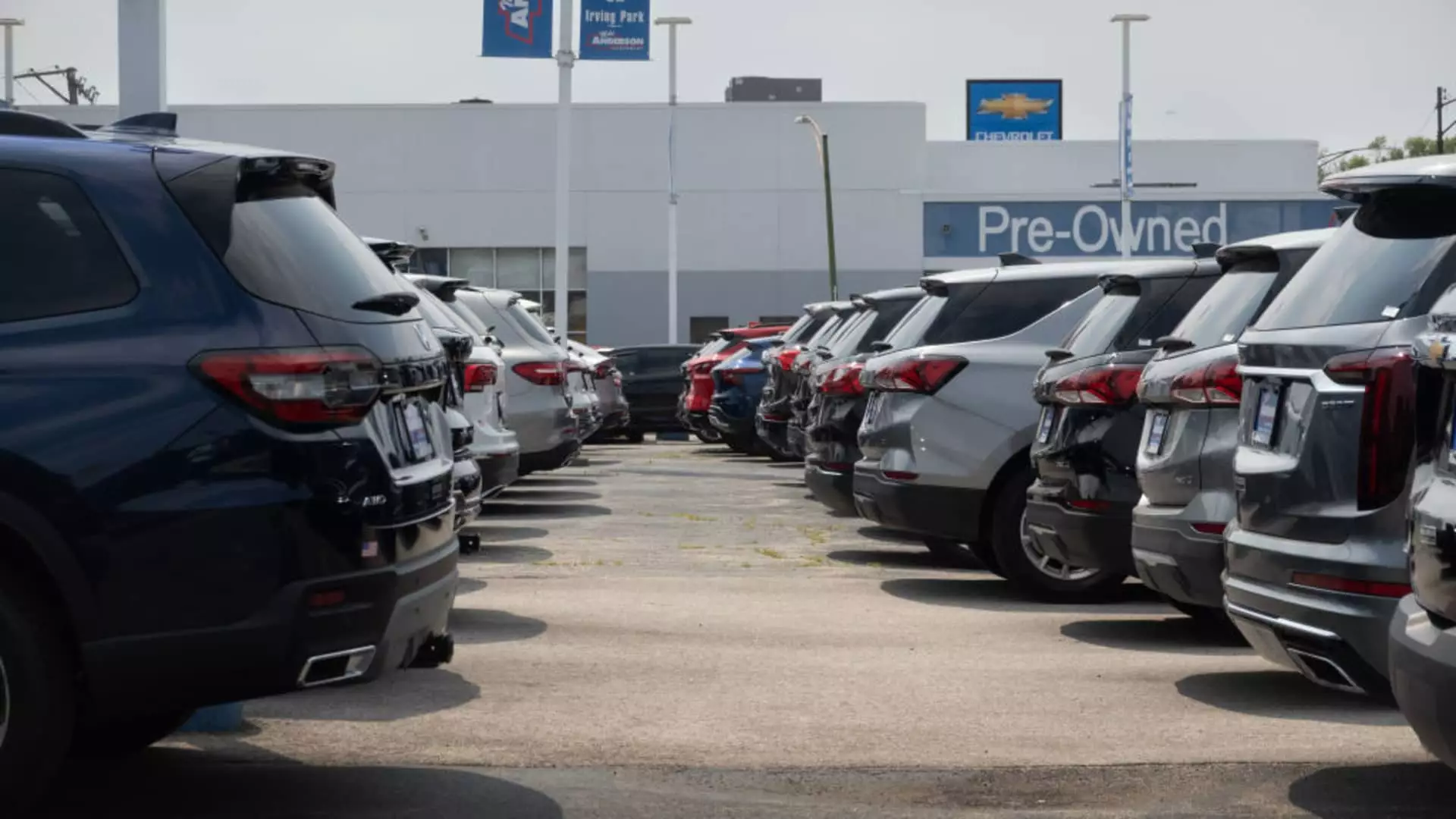In recent years, the automotive financing landscape has transformed drastically for many Americans. A new report from Edmunds.com highlights a pressing concern: a significant number of car owners now find themselves with loans exceeding the value of their vehicles. This phenomenon, often referred to as being “upside-down” on an auto loan, reached an unprecedented average of $6,458 in the third quarter of the year. This figure marks an increase from $6,255 just a quarter earlier, illustrating a troubling trend that cannot be ignored.
While being upside-down on a loan may not be catastrophic in minor amounts, the staggering increase in consumers facing debt significantly above their vehicle’s worth raises alarms. The report by Edmunds points out that over one in five borrowers with negative equity owe more than $10,000 on their vehicles, with 7.5% suffering from equity deficiencies over $15,000. Such figures suggest a widespread issue that could destabilize personal financial situations and contribute to increasing economic pressure. As consumers grapple with these debts, many may find their financial flexibility compromised, affecting their ability to make future purchases or adapt to unexpected financial burdens.
The rise in auto loan delinquencies further compounds the situation, with last month’s Federal Reserve report revealing notable increases compared to pre-pandemic levels. This is particularly concerning as delinquency rates had previously dipped to historic lows during the height of the global pandemic. The current financial predicament hints at deeper systemic issues affecting American consumers, particularly in light of rising interest rates and inflated vehicle prices. Jessica Caldwell, head of insights at Edmunds, emphasizes the growing number of individuals facing troubling equity situations, underscoring the porosity of consumer economic resilience in today’s market.
For individuals caught in the web of upside-down loans, Edmunds recommends strategic approaches to mitigate their financial strain. Holding onto vehicles for extended periods rather than trading them in frequently can prevent further deepening negative equity. Maintenance of vehicles is also critical to avoid rapid depreciation. Ivan Drury, director of insights at Edmunds, posits that consumers must adopt a long-term view of their financing decisions, especially in light of the current market dynamics. Entering into lengthy auto loan terms without the intention or ability to retain a vehicle can ultimately trap borrowers in unfavorable financial positions.
The upsurge in upside-down auto loans signals not just a temporary fluctuation but a shift that demands careful navigation by consumers. Interaction with automotive finance should be approached with caution; as trends evolve and market conditions fluctuate, consumers must remain vigilant about their financial health. Awareness and adaptability will be crucial for those looking to ride out these turbulent times in the automotive market. As the economy continues to evolve post-pandemic, understanding the implications of automotive loans becomes increasingly vital for maintaining financial stability.

